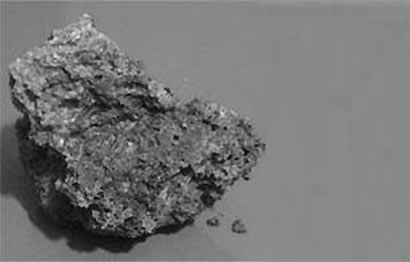SCIENTISTS DISCOVER LIFE FROM OUTER SPACE IN A METEORITE THAT FELL NEAR POLONNARUWA

By Walter Jayawardhana
The ancient city of Polonnaruwa in Sri Lanka has created history as the place where a meteorite that fell there was found with fossilized life coming from outer space – for the first time in the history.
The scientists who discovered the contents of the meteorite said, “We report here the first compelling evidence for life existing outside the earth.’
Following extensive lab work in the United Kingdom and Sri Lanka four scientists in a paper said , “We report the discovery for the first time of fossilized diatoms in a carbonaceous meteorite that fell on 29 December 2012” Diatoms are a variety of algae.
They very firmly said contamination, a hazard scientists face when examining things fallen from the sky on the ground is excluded in the meteorite they have named Polonnaruwa.
The four scientists, Chandra Wickramasinghe, J. Wallis, D.H.Wallis, and Anil Samaranayaka said, there are also structures in the meteorite similar to the red rain cells that fell within days in the area.
The team in a paper to be published in the Journal of Cosmology added , “The new data on fossil diatom provide strong evidence to support the theory of Cometary Panspermia” -a theory that says life came to our planet earth and other worlds hitchhiking on comets from far corners of the universe.
The scientists said minutes after a large fire ball seen by a large number of people in Sri Lanka on 29 December 2012 a large meteorite disintegrated and fell in the village of Araganwila located few miles away from the historic city of Polonnaruwa.
At the time of entry into the earth’s atmosphere on 29 December 2012 the parent body of the Polonnaruwa meteorite would have had most of its interior porous volume filled with water , volatile organics and possibly viable living cells. The scientists said a remarkable coincidence was the red rain.
They said the red rain analyzed at the Medical Research Insitute in Colombo contained red biological cells that show spontaneous movement and the ability of reproducing. Abnormally high in arsenic and silver they are connected to a non territorial habitat , possibly connected with a cometary asteroidal ball. The four scientists said the Polonnaruwa meteorite was a result of a fragmentation of such a body.
The electron microscopic studies of the Polonnaruwa meteorite had been done at the School of Earth Sciences of the Cardiff University , in the United Kingdom.
The scientists said in the meteorite microfossils rather than living cells were seen . The scientists said in the meteorite the donut shaped structure seen has a striking similarity to Kerala red rain cells and the cells contained in the red rain that followed the meteorite fall in the Polonnaruwa area.
The scientists said contamination is decisively ruled out in the meteorite since the structure is deemed to be fossilized and fossil diatoms were not present on the surface of the ground where it fell.The scientists said , contamination is excluded by the circumstance that the elemental abundances within the structures match closely with those of the surrounding matrix. There is also evidence of structures morphologically similar to red rain cells that may have contributed to the episode of red rain that followed within days of the meteorite fall. They said , “We conclude therefore identification of the fossilized diatom of the Polonnaruwa meteorite is firmly established and unimpeachable.”
They also said,” Since this meteorite is considered to be an extinct cometary fragment , the idea of microbial life carried within comets and the theory of cometary panspermia is vindicated.”
The paper said , “The universe , not humans must have the final say to declare what the world is really like.”
Latest Headlines in Sri Lanka
- Sri Lanka President honors Navy, calls for unity in nation-building December 14, 2025
- Sri Lanka President pledges protection of fishermen’s rights amid Mannar crisis December 14, 2025
- Man arrested at Katunayake Airport with over 2 Kg of heroin December 14, 2025
- Sri Lankan President orders swift livelihood restoration for disaster-hit communities December 13, 2025
- Sri Lanka receives over USD 7 Billion in remittances in 2025 December 13, 2025



!
I have had considerable experience at electron microscopy of archeological and geological material. The Polonnaruwa_meteorite bears no resemblance to any carbonaceous chondrite I have ever seen. If I had to identify the rock from my limited data, I would guess that it was tufa. There are plenty of diatoms trapped in some tufas. Thus the meteorite is probably of terrestrial origin, the Rieskessel comes to mind or the, as yet unidentified, astrobleme that caused the Younger Dryas.